
Chad and Jared Moldenhauer are the co-founders of Studio MDHR, the team behind Cuphead. They are also brothers, but don't let the government know that.
2017 has been a murderers row of games. You're probably hearing that a lot and it's not unjustified, it feels like every other game that came out this year is a game of the year. Zelda: Breath of the Wild--Game of the Year 2017! Horizon Zero Dawn--Game of the Year 2017! PlayerUnknown's Battlegrounds--Game of the Year 2017! Mario Odyssey, Persona 5, NieR:Automata, What Remains of Edith Finch--all Games of the Year 2017! Everyone knows these games are absolute bangers, so it feels a little overstated to just place them all in the same Top 10 list as everyone else when there were so many amazing games that were crowded out by the giants. So instead, we want to highlight ten of the best overlooked games of 2017.
10. Monolith: After the End
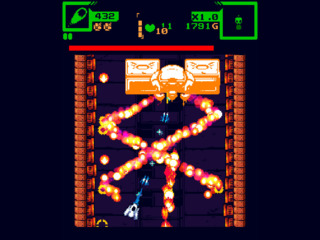
Monolith is like a Binding of Isaac building with each room having a Geometry Wars party in it. Sure, it's another procedurally generated roguelite with pixel graphics, but like Game of the Year 2017 Dead Cells, it's an incredibly satisfying mix of influences and it gets all the core elements right. Slick controls, fun power ups, tight design, and very clear and readable art make it a joy to play. It's kind of amazing that Monolith went completely under everyone's radar. How does a game with a corgi-cat-blob that sells you lasers go unnoticed by the internet?
9. The Surge
Ever since playing Dark Souls, I've had to play at least one Souls-like game a year to maintain sanity. 2017 saw Game of the Year Nioh and Game of the Year DLC Dark Souls III – The Ringed City completely overshadow what many have been asking for for years--sci-fi Dark Souls. While it doesn't quite reach the lofty heights of that dream, The Surge puts a fun thematic and gameplay spin on what's becoming a bit of a worn subgenre.
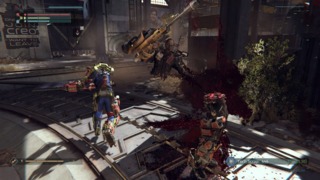
In The Surge you play as a guy named Warren who starts a new job and is immediately thrown into a literary metaphor of employment at a tech company by being permanently surgically attached to his work equipment. Looking to express his anger at being born below-average looking, he picks up heavy objects and smashes the robots that do most of the work. It's like a Silicon Valley dream simulator.
The Surge offers nice little variations to the combat that makes up the core of these games; limb targeting and attack height variation complement the threat hierarchy, timing, and spacing concerns standard to the genre. It's also just nice to see clean lines and shiny chrome in the architecture after years of dungeons and bog pits.
8. The Pathfinder Trifecta: Alwa's Awakening, A Robot Named Fight!, Pharaoh Rebirth+
Game of the Year 2017 Hollow Knight shows that few genres can compete with a masterfully crafted pathfinder game (AKA a Metroidvania). But it wasn't the only one. Three other indie masterpieces fell through the cracks, each with differing philosophies on how to spice up the get-power-to-get-further recipe.
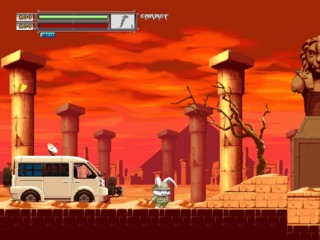
Firstly, we should mention that the unfortunately named Pharaoh Rebirth+ (joining the generic ranks of Action Fighter, Renegade Ops, and Kingdoms of Amalur: Reckoning) actually came out in 2016, but no one played it then so it's probably new to you anyway. Like its structural inspiration Cave Story, Pharaoh is a surprisingly uncommon Japanese indie game of unsurprisingly high quality. Pharaoh reminds me a lot of the platformers of the 32-bit era. Back when the industry was still dominated by Japanese developers, but everyone was transitioning to 3D, there were a number of companies still releasing these somewhat-more-complicated 2D adventures that brimmed with expert craftsmanship. Calling Pharaoh “workmanlike” belies its beautiful pixel animation, inventive boss fights, clever level design, and one of the best jumping spin attacks in a game ever. At the very least, the best blade ears of all time.
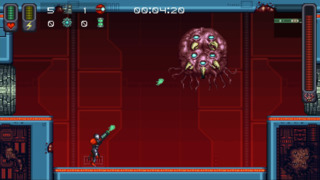
A Robot Named Fight! takes a more modern approach to the pathfinder genre by utilizing procedurally arranged rooms. We don't say procedurally generated rooms because the rooms themselves are blessedly hand crafted and then arranged algorithmically to give the game that rogue-lite variation that plants crave. Not so much a Metroidvania game as a straight up Metroid game, you explore interconnected levels with a float-tastic jump, blow away body-horror beasties with your blaster, and get new abilities to get into smaller places. Aside from just being fun to run around in, A Robot Named Fight! is honestly a monumental achievement, as it was developed by a single person!
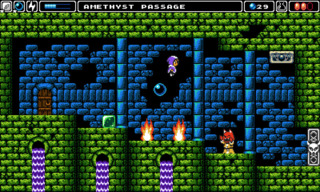
Finally, if we were to classify Pharaoh Rebirth+ as 32-bit, A Robot Named Fight! As 16-bit, Alwa's Awakening would be 8-bit. Well, if we count the Turbografx-16 as 8-bit, it'd probably fall somewhere around there, visually at least. Alwa's Awakening takes a far more methodical approach to the pathfinder genre. Every screen feels like a navigational action-puzzle, far less about fighting baddies than it is about figuring out how to get from A to B. Your tools are more about creation than destruction and the encounter design is very elegant. It gets maybe a bit too unforgiving near the end, but what would a retro game be without some controller throwing difficulty?
7. Last Day of June
Do you remember that scene in Pixar's Up where you get to see the main character fall in love and then experience a sequence of tragic events, as the most important people in his life are taken away from him and all of the unfulfilled dreams and unrealized potential are driven into him by the uncaring passage of time? Would you like to experience that emotional agony for the entire length of a game? Well, Last Day of June is for you!
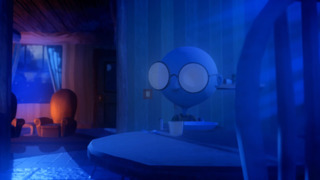
Regret is a strange thing. To ask anyone, regret would be a feeling to be avoided, but the ubiquitousness and constancy of it can speak to a certain love of it. Anyone who's struggled with regret knows how it never seems to let go; you replay events over and over in your head, thinking of how you could have done things better. Last Day of June is about a character who is ostensibly in love with regret. He keeps it with him and obsesses over it to the point where he can relive past events over and over until he gets them right--all towards the mission of a perfect future.
Last Day of June, similarly to Life Is Strange, uses the re-living of events to a desired outcome as an adventure game mechanic to reinforce its theme of bereavement. It uses a wood-carved stylization for its art that neatly sidesteps the uncanny-valley problem that can mire otherwise effective emotional games, and is all the more beautiful for it. There's a maturity to Last Day of June's writing that is rare in gaming, and like Game of the Year 2017 What Remains of Edith Finch, an example that hyper-realism in fidelity may not be the path towards the most effective emotional impact.
6. Cosmic Star Heroine
The first RPG I ever played was Phantasy Star for the Sega Master System. It was a legendary adventure that was so far ahead of its time, it wouldn't be bested until well into the 16-bit era. It was an amazing mix of sci-fi and fantasy, lasers and wizards, ATVs and cats that sprouted wings.
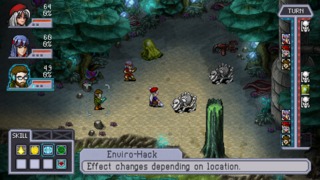
Cosmic Star Heroine's main character Alyssa is named after Phantasy Star's lead Alis. That type of reference to classic inspirations is often emblematic of slavish devotion to roots, but Cosmic Star Heroine's greatest traits are where it deviates from its predecessors. Sure there are combo attacks and field battles from Chrono Trigger, a space faring fantasy adventure right out of Phantasy Star, but the game systems eschew the crass monotony of the genre and are exceptionally well planned and executed. Primarily the battle system--normally a slog of hold-A-to-attack-til-dead in most JRPGs, CSH sets up every fight as a uniquely designed puzzle. Every action a character can take is specialized and figuring out and adapting your strategy on the fly makes even meat-and-potatoes fights interesting. The game is also mercifully bloat-free; it's not a 50 hour game, but nor should it be. Every scene has a specific purpose and the story moves at a brisk pace.
Cosmic Star Heroine was unfortunately released right around Game of the Year 2017 Persona 5 and it lost a lot of mind share due to it. But CSH is a JRPG worth digging into, if only to show that, even in a JRPG, every battle should be engaging.
5. Opus Magnum
If you ask a game designer what the most fun game is, a lot of them will tell you that making games is the most fun game.
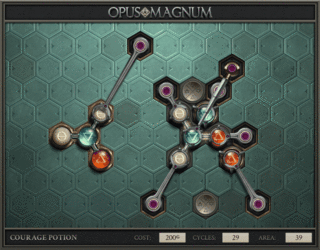
Playing Opus Magnum feels like making a game. Many of Zachtronics' games feel similarly. Space Chem, TIS-100, Shenzhen I/O, they all share a similar goal of if given X, make Y, using f(x), g(x), h(x). If that sounds like calculus, well, it kind of is. Like how mathematics is a rule set for figuring out and employing the nature of the world, Zachtronics' games create a complete abstraction of a language and task you with solving problems with that language. They are puzzles in the purest and most “designed” sense; there is an input that needs to become a specific output and there are parts that will change the input in some way. You know exactly what is needed and exactly what each part does, you just need to figure out the combination, layout, and timing to do it. You have letters, so you can make a word. You have words, so you can make a sentence. You have sentences so you can make a paragraph.
After a while, you can write poetry.
That's the beauty of a Zachtronics game like Opus Magnum. You start out clumsily moving pieces in a linear fashion, across a bloated, simplistic machine that works, but is inelegant. Eventually you'll have a breakthrough where you find that a solution that initially took eight pieces to solve a task can be streamlined into four and it will open your eyes to all new possibilities. Then, you'll view someone else's solution (using the in-game sharing tool) and find out they do it using two pieces and your world will change. But like the open systemic interactions of Game of the Year 2017 Zelda: Breath of the Wild, the joy isn't in the performing of a solution, it's in the discovery of a solution.
4. Flinthook
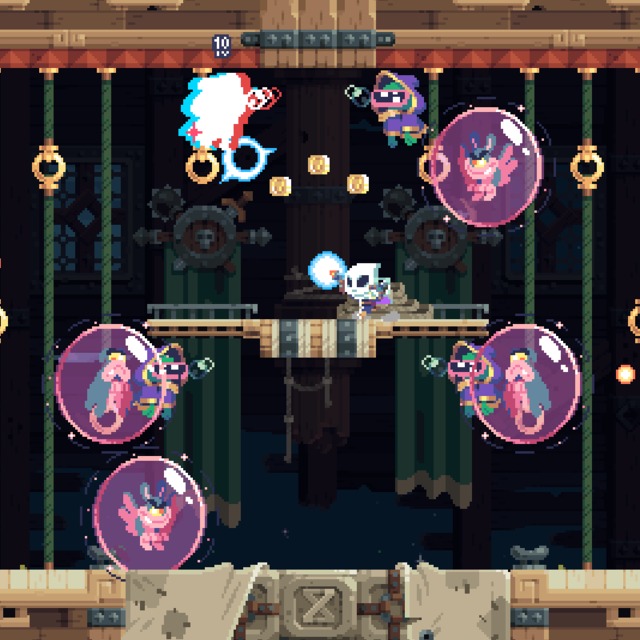
Sometimes a game is just all about feel. There's a honed precision to Flinthook's mechanics that just feels right: the acceleration off of a successful grapple, the amount of aim assist to hit that latch point in a hectic firefight, the perfect amount of friction to create a satisfying wall jump. The core controls of Flinthook are a bedrock that the rest of the game can build a house on. While sometimes the encounter design can be a bit haphazard and some of the dangers get lost in the detail of the beautiful sprite work, Flinthook is at it's absolute best when it creates situations that necessitate sequential grappling and rapid space navigation. Once you get into a good flow state, zipping around a screen full of chaos while completely in control knows few equals.
It's a classic philosophy: you know you've got a good game when just moving your character around the screen is fun. I mean, how much time can you waste just controlling Mario through an empty space in Game of the Year 2017 Mario Odyssey and still have fun?
3. Darkwood
The interaction opposite of Flinthook is Darkwood. It's slow, clunky, and obtuse. And that's totally okay, because it is necessary for what Darkwood is about. Darkwood is disempowering. It will actively fight against your flow state. It will take concentration, planning, and patience and then it will take more from you. You will overcome obstacles and it will make you feel complacent for a while, then when everything seems right, you'll slowly start to realize that things are actually not alright. Oh no.
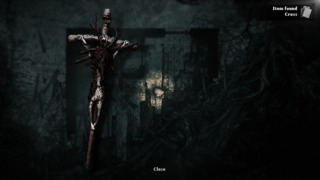
But like Game of the Year 2017 Resident Evil 7, Darkwood creates an exceptionally intriguing atmosphere that is incredibly engaging. There are Cthulhian(?) mysteries throughout the world-building, providing questions far more satisfying than answers in other stories. The visuals are perfectly complementary and the 3D elements work seamlessly with the hyper-detailed 2D art. The vision cone and lighting effects create a perfectly claustrophobic feeling, even when in open fields.
The actual game systems revolve around survival. You need to fortify safe spaces to live through the night, but you need supplies to do so, and that means venturing out into the dangerous areas. Fuel, weapon durability, everything, is constantly running out so you're constantly doing head math while playing. So you'll go out scavenging and you'll run into an enemy. You'll think that all enemies are created equal, when you look at this one and you look at the last one you faced, you can see that statement is not true. See normally, if you go one-on-one with an enemy you got a 50/50 chance of winning. But this one is a genetic freak, and it's not normal, so you got a 25% at best at beating it. And then you add another enemy to the mix, the chance of winning drastically go down. See, in a three way in Darkwood, you got a 33 and 1/3 chance of winning. But the freak, they got a 66 and 2/3 chance of winning, cuz a normal enemy knows he can't beat me, so he's not even going to try. So this freak, takes his 33 1/3 chance, minus my 25% chance, and he's got an 8 and 1/3 chance of winning. But then you take his 75% chance of winning, if we was to go one-on-one and then add 66 2/3% chance, he's got a 141 and 2/3 chance of winning in Darkwood. See, the numbers don't lie. And they spell disaster for you in Darkwood.
2. Bleed 2
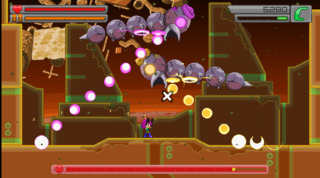
Bleed 2 is the ultimate all-killer, no-filler game. It's an hour of blisteringly fast paced run and gun shooting with slow-mo, multiple air dashes, bullet reflecting, boss crushing gameplay. Saying Bleed 2 is intense is an understatement. It's 2D Vanquish, and like that game, was criminally overlooked.
There's not a whole lot more to say. Tons of bosses, lots of characters, loads of bullets, and precision controls grace you all the way through. Reflecting bullets back at an enemy never felt better. Weaving through a hail of gunfire in slow motion makes you feel like a ballerina of destruction. Bleed 2 is singular in its focus on action and is all the better for it. Hit 'em up.
1. Wonder Boy: The Dragon's Trap
Our love of the Sega Master System is fairly well documented on this site, and Wonder Boy III was one of the defining games of our youth. The non-linear progression, the multiple animal transformations, and the precise grid-based platforming left a long-lasting impression. The presentation was way ahead of it's time (including, as far as I can tell, the first instance of an abilitease), and how the mechanics of each animal form had individual strengths and weaknesses all while tying into the storyline amazed our young minds.
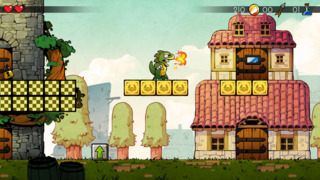
Wonder Boy: The Dragon's Trap is a perfect remake of one of our favourite games of all time, taking everything we loved about the classic game and laying a beautiful new coat of paint over it. The hand-crafted art is absolutely stunning, it has to be seen to be not believed. The re-orchestrated soundtrack is lavishly produced with orchestral swells that capture the feelings of the original with full instrumentation. And everything plays exactly how we remember it.
The Dragon's Trap may not be everyone's favorite game, but it's definitely one of ours. This recreation is clearly a labor of love and it shows through in every single frame.